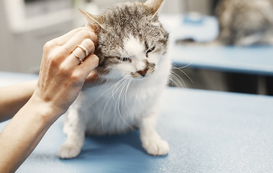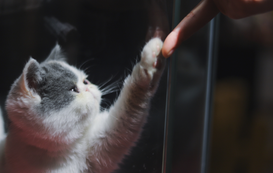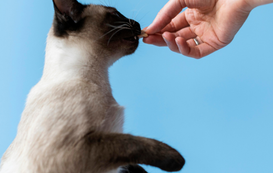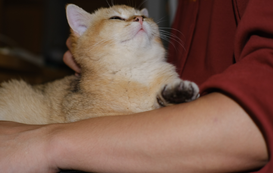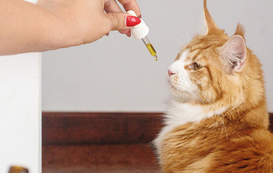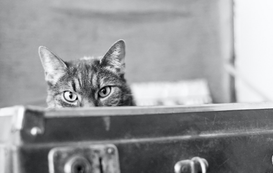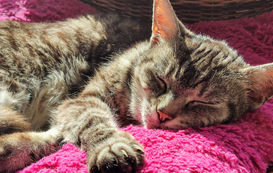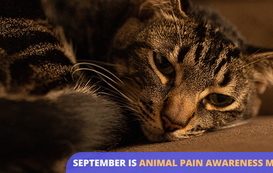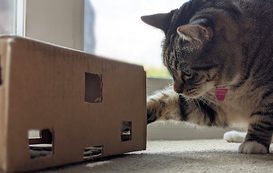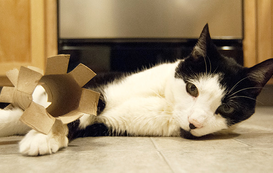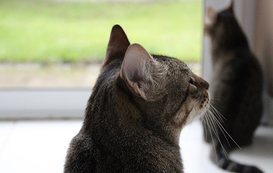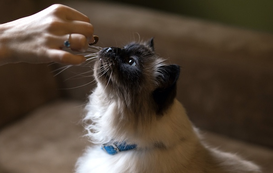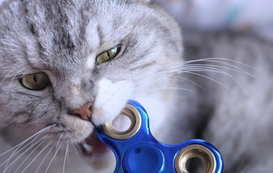- Home
- Cat Sitter Blog
- Cat Behavior
- How to Train a Well-Behaved Feline


How to Train a Well-Behaved Feline
Cats have a reputation for being independent creatures with minds of their own. However, with the right approach and a dash of patience, you can successfully train your cat and even teach them some basic tricks. Not only does training provide mental stimulation for your feline friend, but it also strengthens the bond between you and your furry companion. In this guide, we'll delve into the art of cat training and explore how you can teach your cat some impressive tricks.
Understanding the Basics of Cat Training
Before diving into teaching tricks, it's important to understand the basic principles of cat training. Unlike dogs, cats don't usually respond as readily to verbal commands and praise. They're more motivated by positive reinforcement and play.
Positive Reinforcement: Cats are more likely to repeat behaviors that are rewarded. Use treats, praise, and affection to reward your cat when they exhibit desired behaviors. Positive reinforcement creates a strong association between the action and the reward.
Patience and Consistency: Cats may take time to grasp new concepts, so be patient and consistent in your training. Short, regular training sessions are more effective than long, infrequent ones.
Clicker Training: Clicker training involves using a clicker (a small handheld device that makes a distinct sound) to mark the desired behavior. This helps your cat associate the behavior with the reward.
Teaching Basic Tricks
Sit
Teaching your cat to sit is a great starting point. Follow these steps:
- Hold a treat close to your cat's nose, and then slowly move it up and slightly back over their head.
- As your cat follows the treat with their gaze, their natural response will be to sit down.
- As soon as your cat's bottom touches the ground, use the clicker (or a verbal marker like "good") and give them the treat.
High Five
Believe it or not, you can teach your cat to give you a high-five! Here's how:
- Hold a treat in your hand and show it to your cat.
- Gently tap your cat's paw with your free hand. If they lift their paw, even slightly, use the clicker and give them the treat.
- Gradually increase the height of the tap until your cat starts raising their paw on their own. Always reward the behavior.
Come
Teaching your cat to come when called can be a valuable safety command. Here's how:
- Begin in a quiet room with minimal distractions.
- Call your cat's name in a friendly tone and use a word like "come" or "here."
- When your cat starts moving towards you, use the clicker and reward them with a treat.
- Gradually increase the distance and practice in different rooms.
Troubleshooting and Tips
Keep Training Sessions Short: Cats have short attention spans. Aim for 5-10 minute sessions to keep them engaged and focused.
Use High-Value Treats: Use treats your cat absolutely loves, and reserve them exclusively for training. This makes the rewards more enticing.
Avoid Punishment: Never scold or punish your cat during training. This can create fear and hinder the training process.
End on a Positive Note: Always end training sessions with a successful behavior and a reward. This leaves a positive association with the training.
In Summary
While training cats might require a different approach than training dogs, it's a rewarding endeavor that can strengthen the bond between you and your feline friend. By understanding the principles of positive reinforcement, practicing patience, and employing consistent training techniques, you can teach your cat some impressive tricks that will leave both you and your pet proud. Remember, every cat is unique, so be flexible in your approach and celebrate the small victories along the way. So, gear up with treats, clickers, and a can-do attitude, and embark on a journey of training that will not only entertain and educate your cat but also deepen the wonderful connection you share.
Need someone to keep up with your cat's training while you're away? Search for a trusted Meowtel sitter today!
Sources:
- Clicker Training Has Cats Jumping Through Hoops: American Society for the Prevention of Cruelty to Animals (ASPCA)
- Cat Training: How to Teach Your Cat to Sit in Four Steps: Catster
- Steps for Command Training Your Kitten: Hill's Pet









